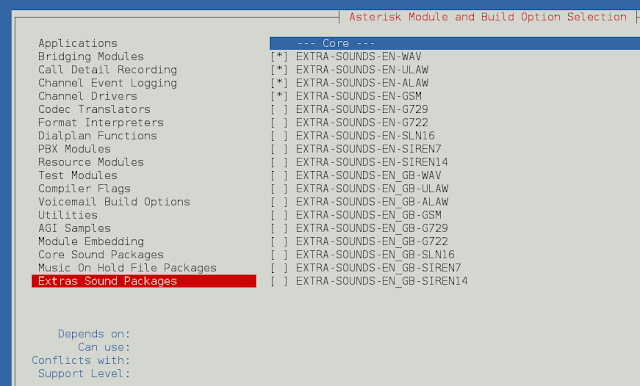The results of the regression problems are continuous or real values. Some commonly used regression algorithms are Linear Regression and Decision Trees. There are several metrics involved in regression like root-mean-squared error (RMSE) and mean-squared-error (MSE). These are some key members of XGBoost models, each plays an important role.
- RMSE: It is the square root of mean squared error (MSE).
- MAE: It is an absolute sum of actual and predicted differences, but it lacks mathematically, that’s why it is rarely used, as compared to other metrics.
XGBoost is a powerful approach for building supervised regression models. The validity of this statement can be inferred by knowing about its (XGBoost) objective function and base learners. The objective function contains loss function and a regularization term. It tells about the difference between actual values and predicted values, i.e how far the model results are from the real values. The most common loss functions in XGBoost for regression problems is reg:linear, and that for binary classification is reg:logistics. Ensemble learning involves training and combining individual models (known as base learners) to get a single prediction, and XGBoost is one of the ensemble learning methods. XGBoost expects to have the base learners which are uniformly bad at the remainder so that when all the predictions are combined, bad predictions cancels out and better one sums up to form final good predictions. Code:
python3
# Necessary imports import numpy as np import pandas as pd import xgboost as xg from sklearn.model_selection import train_test_split from sklearn.metrics import mean_squared_error as MSE # Load the data dataset = pd.read_csv("boston_house.csv") X, y = dataset.iloc[:, :-1], dataset.iloc[:, -1] # Splitting train_X, test_X, train_y, test_y = train_test_split(X, y, test_size = 0.3, random_state = 123) # Instantiation xgb_r = xg.XGBRegressor(objective ='reg:linear', n_estimators = 10, seed = 123) # Fitting the model xgb_r.fit(train_X, train_y) # Predict the model pred = xgb_r.predict(test_X) # RMSE Computation rmse = np.sqrt(MSE(test_y, pred)) print("RMSE : % f" %(rmse)) |
Output:
129043.2314
Code: Linear base learner
python3
# Necessary imports import numpy as np import pandas as pd import xgboost as xg from sklearn.model_selection import train_test_split from sklearn.metrics import mean_squared_error as MSE # Load the data dataset = pd.read_csv("boston_house.csv") X, y = dataset.iloc[:, :-1], dataset.iloc[:, -1] # Splitting train_X, test_X, train_y, test_y = train_test_split(X, y, test_size = 0.3, random_state = 123) # Train and test set are converted to DMatrix objects, # as it is required by learning API. train_dmatrix = xg.DMatrix(data = train_X, label = train_y) test_dmatrix = xg.DMatrix(data = test_X, label = test_y) # Parameter dictionary specifying base learner param = {"booster":"gblinear", "objective":"reg:linear"} xgb_r = xg.train(params = param, dtrain = train_dmatrix, num_boost_round = 10) pred = xgb_r.predict(test_dmatrix) # RMSE Computation rmse = np.sqrt(MSE(test_y, pred)) print("RMSE : % f" %(rmse)) |
Output:
124326.24465
Note: The dataset needs to be converted into DMatrix. It is an optimized data structure that the creators of XGBoost made. It gives the package its performance and efficiency gains. The loss function is also responsible for analyzing the complexity of the model, and if the model becomes more complex there becomes a need to penalize it and this can be done using Regularization. It penalizes more complex models through both LASSO (L1) and Ridge (L2) regularization to prevent overfitting. The ultimate goal is to find simple and accurate models. Regularization parameters are as follows:
- gamma: minimum reduction of loss allowed for a split to occur. Higher the gamma, fewer the splits.
alpha: L1 regularization on leaf weights, larger the value, more will be the regularization, which causes many leaf weights in the base learner to go to 0. - lambda: L2 regularization on leaf weights, this is smoother than L1 and causes leaf weights to smoothly decrease, unlike L1, which enforces strong constraints on leaf weights.
Below are the formulas which help in building the XGBoost tree for Regression. Step 1: Calculate the similarity scores, it helps in growing the tree.
Similarity Score = (Sum of residuals)^2 / Number of residuals + lambda
Step 2: Calculate the gain to determine how to split the data.
Gain = Left tree (similarity score) + Right (similarity score) - Root (similarity score)
Step 3: Prune the tree by calculating the difference between Gain and gamma (user-defined tree-complexity parameter)
Gain - gamma
If the result is a positive number then do not prune and if the result is negative, then prune and again subtract gamma from the next Gain value way up the tree. Step 4: Calculate output value for the remaining leaves
Output value = Sum of residuals / Number of residuals + lambda
Note: If the value of lambda is greater than 0, it results in more pruning by shrinking the similarity scores and it results in smaller output values for the leaves. Let’s see a part of mathematics involved in finding the suitable output value to minimize the loss function For classification and regression, XGBoost starts with an initial prediction usually 0.5, as shown in the below diagram. 






- Take the derivative w.r.t output value.
- Set derivative equals 0 (solving for the lowest point in parabola)
- Solve for the output value.
- g(i) = negative residuals
- h(i) = number of residuals





